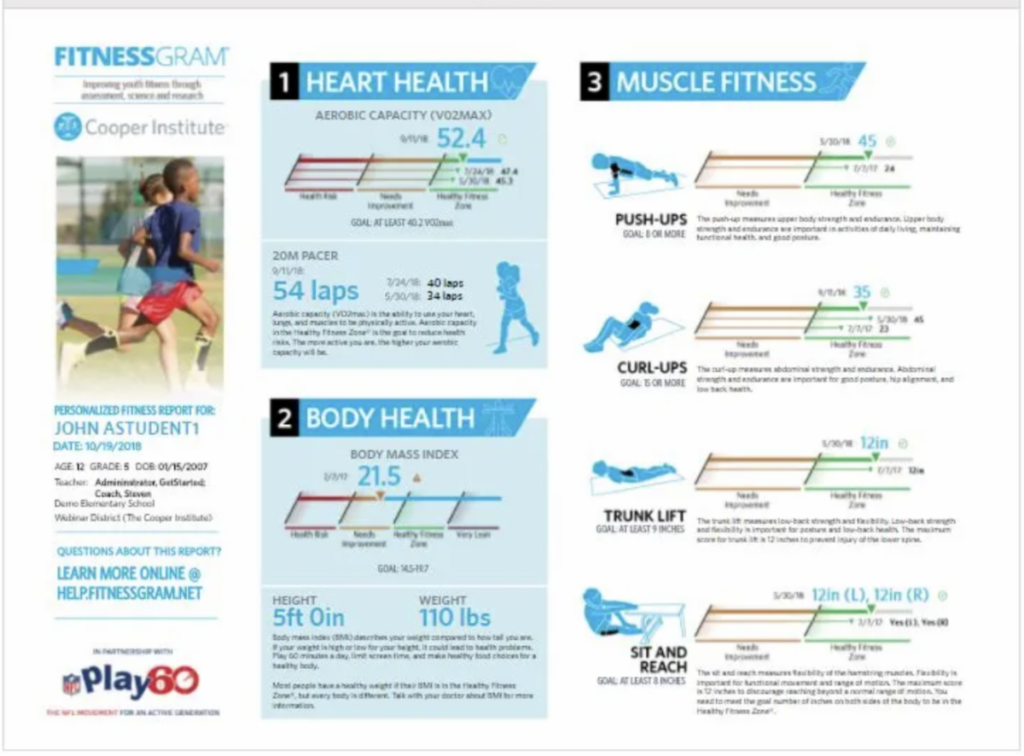Does Your Child Struggle, Act Out or Avoid PE/Gym/Wellness Class? 🏀 ⚾
The theme for this week … kids’ love-hate relationship with PE class
As school gets into mid-semester, how many of your kids are struggling with doing the requirements of the PE (wellness) class? If you are frustrated with ways to help and wonder why they struggle, read on …
What are the requirements of PE class, and why might your child struggle?
Physical activity is essential to memory consolidation in the learning process, so PE class is not a fluff class.
In fact, most states have an official requirement and specific course requirements incorporating the FitnessGram® program to measure and report on students’ physical performance. The student progress is classified as ‘Healthy’ or ‘Needs Improvement’.
What is included in FitnessGram tests?
Developed in 1982, FitnessGram has been used by many schools as a gauge to determine physical fitness of each student. (See more below) These are the activities tested:
- Aerobic Capacity is measured by using the PACER (Progressive Aerobic Cardiovascular Endurance Run) test. It is a 20-minute run increasing in intensity over time. The alternative is the mile-run.
- Muscular Strength, Endurance, and Flexibility are measured with push-ups, sit-ups, and the sit-and-reach test.
Why might your child struggle?
The activities measured require a well-functioning body. For children with micromovement disrupters in their earlier years, the following may not come easily.
- Endurance – Often early illness or birth/early life challenges impact the ability of the lungs and diaphragm to support the increased oxygen needs for physical fitness activities.
- Coordination – Illness, injury, medical procedures and birth/early life issues can interrupt the early stages of muscle and joint coordination from forming.
What can you do to help?
Whether its endurance or coordination, you can see that your child functions, but not at the levels expected for their age, or of their peers. Practice helps, but often only minimally. As a parent what else can you do to help to struggle less with being active?
Bridging® is an option. We are able to quickly figure out why your child struggles with a specific activity, and then reset his or her muscle function allowing immediate improvement. 🙂
About the FitnessGram®

All Illinois public schools are required to administer a physical fitness assessment to students in grades 3-12. Illinois has selected FITNESSGRAM[1] , a health-related fitness test that is intended to help students acquire lasting habits of regular physical activity.
The four required areas of fitness assessment are as follows:
For Aerobic Capacity, grades 4-12 will take the PACER test (recommended) or Mile Run Test (alternate) or Brockport test (adapted);
For Flexibility, grades 3-12 will take the Back-Saver Sit and Reach test (recommended) or Trunk Lift test (alternate) or Brockport test (adapted);
For Muscular Endurance, grades 3-12 will take the Curl-Up test or Brockport test (adapted); and
For Muscular Strength, grades 3-12 will take the Push-Up test or Brockport test (adapted).
[1] The FITNESSGRAM and Healthy Fitness Zone (HFZ) are registered trademarks of The Cooper Institute.
Insight of the Week from Becki
 We all know kids need physical activity for their health, as well as building motor skills in a growing body. But some kids avoid, struggle, or shut down when it comes to physical activity, especially at school in PE class.
We all know kids need physical activity for their health, as well as building motor skills in a growing body. But some kids avoid, struggle, or shut down when it comes to physical activity, especially at school in PE class.
Many of us have frustrating memories from gym class. I remember doing the Presidential Fitness test and feeling great about the sit and reach, and flex-arm hang, but for the life of me, I couldn’t do a pull-up, keep up with my peers on sit-ups, or make it to the top of that rope.
My current Bridging® insights finally explained why I struggled with select aspects of the testing back in PE class.
PE/Gym/Wellness class struggles?
When I talk with kids that co
me into the office, they seem to fall into two groups — they love gym class, or they would do anything to avoid it.
Some kids struggle with endurance, coordination, or both. It’s often not a matter of trying harder. Due to earlier events in life, your child may genuinely have a harder time.
For children struggling with PE class, we find a mix of the four interrupters of movement in their background:
- Injuries
- Illness
- Medical Interventions
- Early life/birth events
The good news is that these can change!
How does Bridging® uniquely help endurance and coordination?
The Bridging® assessment looks at your foundational movements and transitions, which are initially formed in this early period of life.
We can identify tight, loose, or incomplete muscle coordination. We then support the muscles and reset how they work together for improvements in strength, speed, and endurance without working out.
Being active is so vitally important overall to your child’s health. Bridging® lets your child participate in activities more easily.

